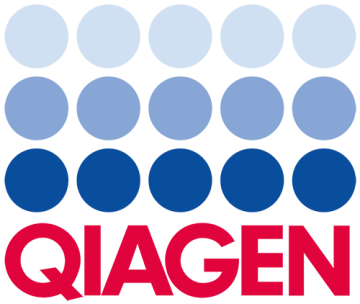VEGF Signaling
The vascular endothelial growth factor family of growth factors (VEGF) play a fundamental role in the growth and differentiation of vascular as well as lymphatic endothelial cells. In addition, VEGF is also a significant mediator of hypoxia-induced angiogenesis in pathological situations like diabetic retinopathy, tumor angiogenesis and coronary artery disease. The hypoxia inducible factor, (HIF-1) and mRNA binding protein HuR play a significant role in inducing transcription of the VEGF gene under hypoxic conditions. The angiogenic effects of VEGF are mediated via the vascular endothelium via receptor tyrosine kinases (VEGFR) that become phosphorylated upon activation.VEGF is a survival factor for endothelial cells...
Pathway Summary
The vascular endothelial growth factor family of growth factors (VEGF) play a fundamental role in the growth and differentiation of vascular as well as lymphatic endothelial cells. In addition, VEGF is also a significant mediator of hypoxia-induced angiogenesis in pathological situations like diabetic retinopathy, tumor angiogenesis and coronary artery disease. The hypoxia inducible factor, (HIF-1) and mRNA binding protein HuR play a significant role in inducing transcription of the VEGF gene under hypoxic conditions. The angiogenic effects of VEGF are mediated via the vascular endothelium via receptor tyrosine kinases (VEGFR) that become phosphorylated upon activation.VEGF is a survival factor for endothelial cells. The anti-apoptotic activity of VEGF is mediated by the phosphatidylinositol (PI)-3 kinase-AKT pathway. AKT can counteract apoptotic signaling by phosphorylating and inactivating pro-apoptotic proteins like BAD, which results in the activation of anti-apoptotic proteins like BCL-2 in endothelial cells. AKT has also been reported to directly phosphorylate and activate endothelial nitric oxide synthase (eNOS) in a Ca2+ independent manner resulting in the production of NO in response to VEGF stimulation. The PLC-γ-PKC pathway has also been implicated in regulating the action of eNOS. VEGF induces the phosphorylation and activation of PLC-γ leading to the generation of diacylglycerols (DAG) and inositol 1, 4, 5-trisphosphate (IP3).The increase in intracellular Ca2+ due to IP3 activates eNOS, whereas diacyl-glycerol activates certain PKC isoforms. PKC in turn regulates the activity of eNOS and hence NO production. Nitric oxide plays an important role in cardiovascular homesotasis by regulating systemic blood pressure, vascular remodeling and angiogenesis.VEGF promotes endothelial cell migration by activating the Rho-dependent kinase (ROCK), which in turn phosphorylates Focal adhesion kinase (FAK) on Ser732. Proline-rich tyrosine kinase-2 (PYK2) is also activated in response to VEGF and triggers the phosphorylation of Tyr407 within FAK, an event necessary for cell migration. Phosphorylation of FAK by ROCK is a prerequisite for phosphorylation of FAK by PYK2. In addition to endothelial cell survival and migration, VEGF also promotes proliferation of endothelial cells. This is facilitated by the activation of the mitogen activated protein kinase (MAPK) pathway.This pathway highlights the important molecular events involved in VEGF signaling.
VEGF Signaling Genes list
Explore Genes related to VEGF Signaling
ACTA1actin alpha 1, skeletal muscle ACTA2actin alpha 2, smooth muscle ACTBactin beta ACTC1actin alpha cardiac muscle 1 ACTG1actin gamma 1 ACTG2actin gamma 2, smooth muscle ACTN1actinin alpha 1 ACTN2actinin alpha 2 ACTN3actinin alpha 3 ACTN4actinin alpha 4 AKT1AKT serine/threonine kinase 1 AKT2AKT serine/threonine kinase 2 AKT3AKT serine/threonine kinase 3 ARNTaryl hydrocarbon receptor nuclear translocator BADBCL2 associated agonist of cell death BCL2BCL2 apoptosis regulator EIF1eukaryotic translation initiation factor 1 EIF1AXeukaryotic translation initiation factor 1A X-linked EIF1AYeukaryotic translation initiation factor 1A Y-linked EIF2B1eukaryotic translation initiation factor 2B subunit alpha EIF2B2eukaryotic translation initiation factor 2B subunit beta EIF2B3eukaryotic translation initiation factor 2B subunit gamma EIF2B4eukaryotic translation initiation factor 2B subunit delta EIF2B5eukaryotic translation initiation factor 2B subunit epsilon EIF2S1eukaryotic translation initiation factor 2 subunit alpha EIF2S2eukaryotic translation initiation factor 2 subunit beta EIF2S3eukaryotic translation initiation factor 2 subunit gamma ELAVL1ELAV like RNA binding protein 1 ERASES cell expressed Ras FLT1fms related receptor tyrosine kinase 1 FLT4fms related receptor tyrosine kinase 4 FOXO1forkhead box O1 FOXO3forkhead box O3 GRB2growth factor receptor bound protein 2 HIF1Ahypoxia inducible factor 1 subunit alpha HRASHRas proto-oncogene, GTPase KDRkinase insert domain receptor KRASKRAS proto-oncogene, GTPase MAP2K1mitogen-activated protein kinase kinase 1 MAP2K2mitogen-activated protein kinase kinase 2 MAPK1mitogen-activated protein kinase 1 MAPK14mitogen-activated protein kinase 14 MAPK3mitogen-activated protein kinase 3 MRASmuscle RAS oncogene homolog NOS3nitric oxide synthase 3 NRASNRAS proto-oncogene, GTPase PDGFCplatelet derived growth factor C PGFplacental growth factor PIK3C2Aphosphatidylinositol-4-phosphate 3-kinase catalytic subunit type 2 alpha PIK3C2Bphosphatidylinositol-4-phosphate 3-kinase catalytic subunit type 2 beta PIK3C2Gphosphatidylinositol-4-phosphate 3-kinase catalytic subunit type 2 gamma PIK3C3phosphatidylinositol 3-kinase catalytic subunit type 3 PIK3CAphosphatidylinositol-4,5-bisphosphate 3-kinase catalytic subunit alpha PIK3CBphosphatidylinositol-4,5-bisphosphate 3-kinase catalytic subunit beta PIK3CDphosphatidylinositol-4,5-bisphosphate 3-kinase catalytic subunit delta PIK3CGphosphatidylinositol-4,5-bisphosphate 3-kinase catalytic subunit gamma PIK3R1phosphoinositide-3-kinase regulatory subunit 1 PIK3R2phosphoinositide-3-kinase regulatory subunit 2 PIK3R3phosphoinositide-3-kinase regulatory subunit 3 PIK3R4phosphoinositide-3-kinase regulatory subunit 4 PIK3R5phosphoinositide-3-kinase regulatory subunit 5 PIK3R6phosphoinositide-3-kinase regulatory subunit 6 PLCG1phospholipase C gamma 1 PLCG2phospholipase C gamma 2 PRKCAprotein kinase C alpha PRKCBprotein kinase C beta PROK1prokineticin 1 PTK2protein tyrosine kinase 2 PTK2Bprotein tyrosine kinase 2 beta PTPN11protein tyrosine phosphatase non-receptor type 11 PTPN6protein tyrosine phosphatase non-receptor type 6 PXNpaxillin RAF1Raf-1 proto-oncogene, serine/threonine kinase RALARAS like proto-oncogene A RALBRAS like proto-oncogene B RAP1ARAP1A, member of RAS oncogene family RAP1BRAP1B, member of RAS oncogene family RAP2ARAP2A, member of RAS oncogene family RAP2BRAP2B, member of RAS oncogene family RASD1ras related dexamethasone induced 1 RASD2RASD family member 2 ROCK1Rho associated coiled-coil containing protein kinase 1 ROCK2Rho associated coiled-coil containing protein kinase 2 RRASRAS related RRAS2RAS related 2 SFNstratifin SH2D2ASH2 domain containing 2A SHC1SHC adaptor protein 1 SOS1SOS Ras/Rac guanine nucleotide exchange factor 1 SOS2SOS Ras/Rho guanine nucleotide exchange factor 2 SRCSRC proto-oncogene, non-receptor tyrosine kinase VCLvinculin VEGFAvascular endothelial growth factor A VEGFBvascular endothelial growth factor B VEGFCvascular endothelial growth factor C VEGFDvascular endothelial growth factor D YWHAEtyrosine 3-monooxygenase/tryptophan 5-monooxygenase activation protein epsilon
